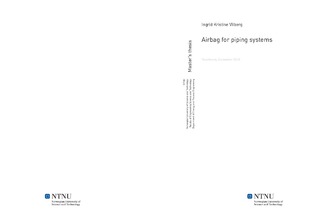Airbag for piping systems
Master thesis
Permanent lenke
http://hdl.handle.net/11250/234147Utgivelsesdato
2010Metadata
Vis full innførselSamlinger
Sammendrag
Pressure transients are caused by a change in the volumetric flow in a pipeline system, and can have severe consequences for rapid changes of the volumetric flow. A sudden closure of a valve is a common source of a pressure transient, and the pressure increase in front of the valve depends on the flow rate and the wave propagation velocity in the fluid and pipe. A gas-liquid mixture can have a very low wave propagation velocity, even for small air contents, and is effective in terms of damping due to the compressibility effects of the gas bubbles. With these alterations of the fluid properties the pressure transient will be weakened with reduced amplitude and an increased period, which are beneficial effects for the pipeline system.A simple experiment was carried out to investigate the practical solutions for the air injection system, and the results showed that the presence of air was beneficial in terms of a reduction of the amplitude and increased damping of the pressure transient. However, a few aspects should be revised in a refinement of the experiment. The air flow rate and duration were uncertain because of water accumulating in the air hose, and the timing of the gate valve closure was challenging.Simulations of various models of pipe systems were carried out in Flowmaster. The models are sufficient for simulation of ordinary pipes with a rapid closure of a valve, but fall short at modeling an air-water mixture. This is because only the reduced wave propagation is taken into account, and not the effects of the bubbles.
